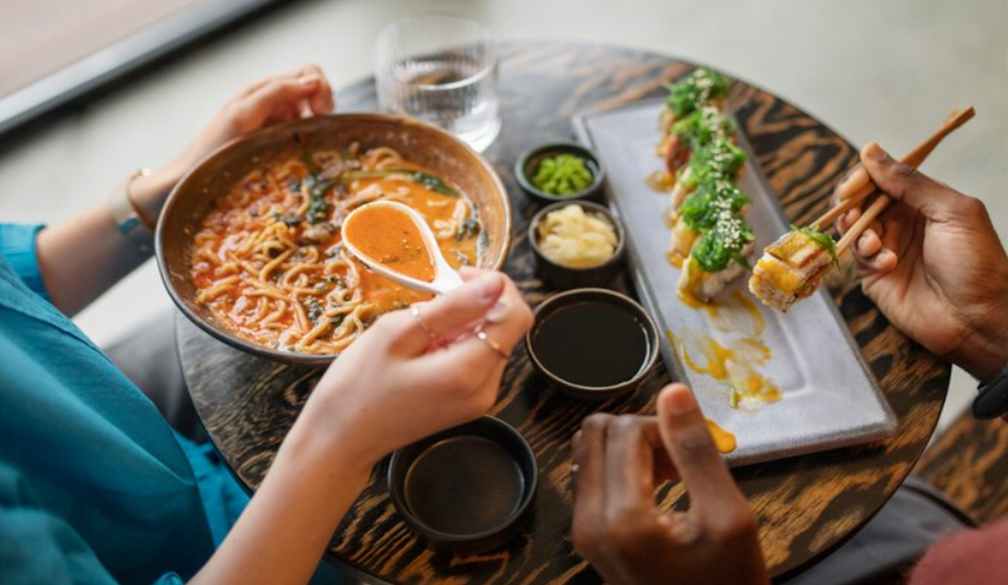One Pot, Endless Possibilities: 3 Delicious Meals to Make in a Japanese Donabe (Beyond Hot Pot)

When you picture a traditional Japanese Donabe (Hot Pot), you likely imagine a simmering, communal broth shared with friends and family on a cool evening. And you’re not wrong, it’s the quintessential tool for creating nabe, the comforting Japanese hot pot dishes we all love.
But to see the donabe as only a vessel for hot pot is to miss out on its true potential. This beautiful, rustic clay pot is one of the most versatile and rewarding pieces of cookware you can own. Its ability to build and retain gentle, even heat makes it perfect for a surprising range of culinary tasks.
Ready to unlock its secrets? Here are three delicious meals you can make in your donabe that go far beyond the classic hot pot.
1. The Most Perfect, Fluffy Steamed Rice
Forget your electric rice cooker. Cooking rice in a donabe is a time-honoured tradition, and for good reason. The thick clay walls distribute heat evenly, cooking each grain to fluffy perfection while preventing the mushiness that can sometimes happen in a metal pot.
How to do it: For two cups of Japanese short-grain rice, rinse it until the water runs clear. Let the rice soak in the donabe with 2 ¼ cups of water for at least 30 minutes. Place the lid on, bring to a boil over medium-high heat (this takes about 10-15 minutes), then immediately reduce the heat to the lowest setting and simmer for another 12-15 minutes.
Finally, turn off the heat and let the dish rest, covered, for 15 minutes. The result is incredibly fragrant, perfectly cooked rice. If you’re lucky, you’ll even get a layer of crispy, coveted okoge (scorched rice) at the bottom.
2. Savoury and Delicate Steamed Fish with Vegetables
The donabe is a natural steamer, locking in moisture and flavour to create dishes that are both healthy and incredibly tasty. Steaming fish and vegetables in a donabe is a simple, elegant way to prepare a weeknight meal.
How to do it: Place a steam rack inside your donabe and add about a cup of water or dashi broth. Lay a piece of parchment paper over the rack and place your seasoned fish fillets (like salmon or black cod) on top, surrounded by quick-cooking vegetables like bok choy, asparagus, or sliced shiitake mushrooms. Bring the water to a boil, then reduce the heat to a gentle simmer and steam with the lid on for 10-15 minutes, or until the fish is flaky and cooked through.
The presentation is part of the charm. Bring the donabe directly to the table for serving, or portion out the delicate fish and vegetables onto individual Japanese Deep Plates, which are perfect for cradling the food and any flavourful broth.
3. Rustic, No-Knead Clay Pot Bread
This might be the most surprising use of all. Your donabe can function just like a high-end Dutch oven to bake bread with a phenomenally crispy crust and a soft, airy crumb. The clay pot traps steam as the bread bakes, creating the perfect environment for a bakery-quality loaf.
How to do it: Prepare your favourite no-knead bread dough and let it rise. About 30 minutes before you’re ready to bake, place your empty, lidded donabe into a cold oven and preheat it to 230°C (450°F).
Once the oven and donabe are fully heated, carefully remove the donabe, place your dough inside, put the lid back on, and return it to the oven. Bake for 30 minutes, then remove the lid and bake for another 15-20 minutes until the crust is deep golden brown.
This rustic loaf is the perfect accompaniment to any meal, whether it's served alongside a hearty stew or used to soak up the delicious juices from skewers you've just pulled off your Hibachi (BBQ Grill).
From perfect rice to artisanal bread, the donabe is a true kitchen workhorse waiting to be discovered. It’s more than just a pot, it’s an invitation to slow down, cook with intention, and create soulful meals year-round.
Looking for a reputable retailer and wholesaler of authentic Japanese tableware in Australia? Check out Direct from Japan, They hand-select only the finest Japanese-made ceramics from vetted manufacturers, with all goods directly imported from Japan.








